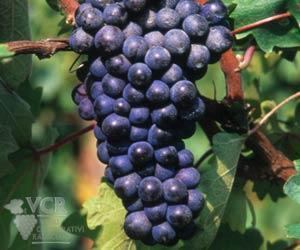Wine color Red Wine | Sweetness of resulting wine Dry | |
 | ||
Also called Nero Amaro, Abruzzese (more) Scientific name Vitis vinifera 'Negroamaro' Similar Zinfandel, Montepulciano, Aglianico, Common Grape Vine, Nero d'Avola | ||
Negroamaro native italian wine from puglia
Negroamaro (seldom Negro amaro), is a red wine grape variety native to southern Italy. It is grown almost exclusively in Apulia and particularly in Salento, the peninsula which can be visualised as the “heel” of Italy. The grape can produce wines very deep in color. Wines made from Negroamaro tend to be very rustic in character, combining perfume with an earthy bitterness. The grape produces some of the best red wines of Apulia, particularly when blended with the highly scented Malvasia Nera, as in the case of Salice Salentino.
Contents
- Negroamaro native italian wine from puglia
- Montoliva vineyard winery pressing negroamaro 2010
- History
- Distribution and wines
- List of permitted DOC wines
- List of permitted IGT wines
- Vine and viticulture
- Synonyms
- References
Montoliva vineyard winery pressing negroamaro 2010
History
Although amaro is Italian for ‘bitter’, the name "Negroamaro" is thought to derive from two words meaning ‘black’: the Latin language negro and the ancient Greek Mary Maru shares a root with "merum", a wine brought to Apulia by Illyrian colonists before the Greeks arrived in the 7th century BC. Horace and other Roman writers mention "mera tarantina" from Taranto, and Pliny the Elder describes Manduria as viticulosa (full of vineyards). But after the fall of the Roman Empire winemaking declined until it was only kept alive in the monasteries - Benedictine on Murgia and Greek Orthodox in Salento. Negroamaro could be the grape used in merum, or it could have been brought by traders from the home of winemaking in Asia Minor at any point in the last 8,000 years.
Negroamaro precoce has recently been identified as a distinct clone.
RAPD analysis suggests that the cultivar is loosely related to Verdicchio (Verdeca) and Sangiovese.
Distribution and wines
The grapes are used exclusively for wine-making. Although 100% varietal wines are produced, Negroamaro is more commonly used as the dominant component of a blend including such varieties as Malvasia Nera, Sangiovese or Montepulciano. These wines are red, or sometimes rosato, and are usually still; though both red and rosato versions may be frizzante.
List of permitted DOC wines
Source 85%–100% Negroamaro:
85%–100% Negroamaro:
70%–100% Negroamaro:
65%–100% Negroamaro:
60%–80% Negroamaro:
50%–100% Negroamaro:
15%–30% Negroamaro:
List of permitted IGT wines
Source 85%–100% Negroamaro:
70%–100% Negroamaro:
70%–80% Negroamaro:
Vine and viticulture
The vine is vigorous and high-yielding with a preference for calcareous and limey soils but adapting readily to others. It is well suited to Puglia’s hot summers and exhibits good drought-resistance. The grapes, carried in bunches of around 300–350 g, are oval in form, medium-large in size with thick skins, and black-violet in colour. They ripen mid-season (late September–early October). The first American producer of Negroamaro is Chiarito Vineyards in Ukiah, California (Mendocino County).
Synonyms
Abbruzzese, Abruzzese, Albese, Amaro Nero, Amaronero, Arbese, Arbise, Jonico, Lacrima, Lacrimo, Mangia Verde, Mangiaverde, Mangiaverme, Morese, Negra Della Lorena, Negramaro, Nero Amaro, Nero Leccese, Nicra Amaro, Niuri Maru, Niuru Maru, San Lorenzo, San Marzuno, Uva cane.
